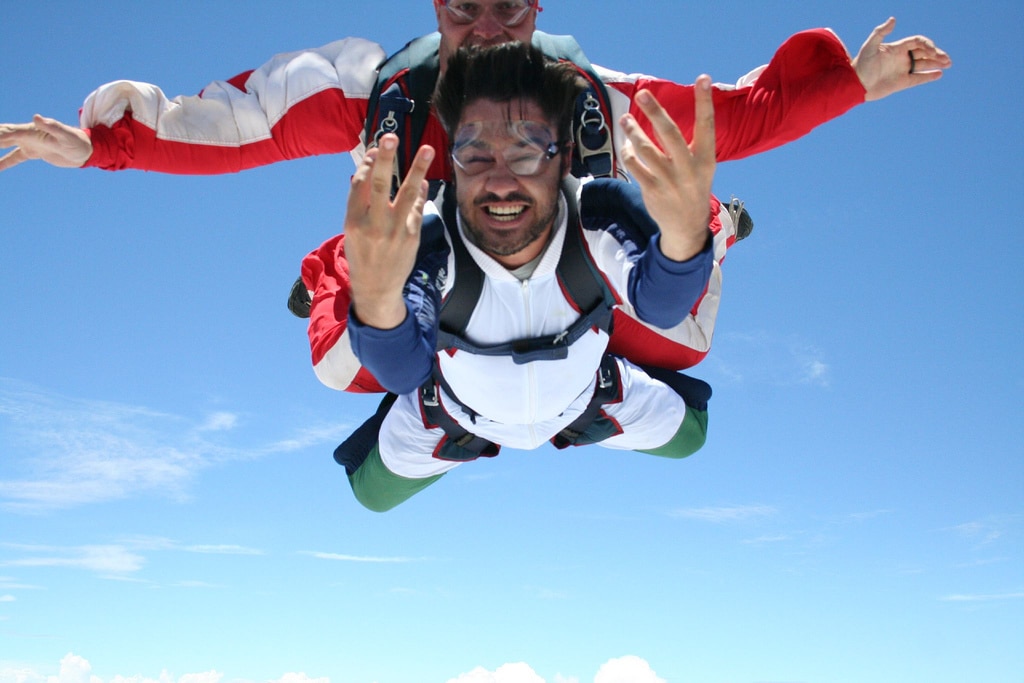The word adventure always has an exciting component that transports us to places generally open, very cold, very hot, very humid, very steep, risky and sometimes at high speed. If adventure or extreme sports are not simple to practice or suitable for anyone, as a photographer, they are not easy to photograph, since they require not only enough technical knowledge, but also enough knowledge of the sport or extreme activity that we want to photograph.
Surely extreme photographers like both activity and photography, but surely they started with the activity and from there arose the desire to portray it. Be that as it may, the first ingredient of extreme photography is to know the sport we want to photograph to do it as safely as possible. For example, I would not recommend anyone photographing an expedition to K2 without much prior training.
A previous knowledge of the sport will not only be safer for your physical integrity but it will help you to know the best angles to photograph it, the safest places, the best frames and even the best material to do it. It is not the same to photograph some freestyle jumps in the snow than a limestone rock climbing session or a diving session.
NECESSARY MATERIAL
No one better than you, if you are fond of extreme sports, knows what context you will have to face when choosing the necessary material for your photo shoot. However, we will see in general, what basic material is recommended to start in extreme sports photography.CAMERA
The DSLR or SLR are the recommended classics thanks to the possibility of controlling them manually, exchanging the lenses, adapting an external flash and generally having more accessories. However, they are not the only option to contemplate, some EVIL and even some very advanced compact have nothing to envy to the reflexes of a lifetime. But let's see what to consider when choosing a camera to photograph extreme sports:- Body sealed against dust, splashes, etc.
- Resistance to extreme temperatures : You must take it into account if what you are passionate about is sports in the snow or in the desert since the cameras usually fail under extreme temperatures. The more you support your camera, the better.
- Number of frames per second : Based on the fact that many extreme sports happen quickly, having a good number of frames per second, can make the difference between getting the image and not doing it.
- Weight : It is not the same to be able to install your “mamotreto” on a tripod and wait, that having to carry it while you practice climbing, right?
- Analog : Yes, do not panic In some cases such as very extreme temperatures at below zero, the batteries discharge very fast and the screens freeze, so some photographers opt for analog photography to solve this problem. So if you find yourself at -20 degrees and your digital fails, you can try
FOCAL
Unlike other sports, extreme sports are usually practiced outdoors and usually have difficult access for those who want to photograph them, so, unless we attend a competition in a closed place, we will assume that we will "face ”To those images in the open field.FIXED OPTICS OR ZOOM?
Unfortunately, not everything is black or white with respect to the decision to choose between a fixed focus or a zoom. Broadly speaking, the advantages of fixed optics are its higher image quality and its greater brightness at a much lower price than zoom lenses of equal brightness. On the contrary, a fixed optics limits when approaching or moving away from the scene in an agile way, and implies that we should do that movement, which is not always possible or easy. The optical zoom allow us to get closer or away from the scene instantly, but are generally less bright optical and less sharp.WHAT FOCAL LENGTH TO CHOOSE?
The choice between an optic with a focal length or another, basically lies in the distance at which it is expected that you can be located to photograph the scene.-
- Wide Angle: If you can get close enough to the main scene, this objective will allow you to accompany the center of interest of your image including the context in the frame. And thanks to its angle and distortion it will allow you to have very interesting perspectives.
-
- 50mm: If you can move freely around the scene and control the distance, this is a great goal because of its sharpness, its great luminosity and its low weight.
- Telephoto: If you plan to photograph the scene from a distance, getting one of these is almost mandatory. Consider a focal length of 200mm, as bright as possible, or at least as bright as you can afford and if possible with a stabilizer if your camera body does not have one.


